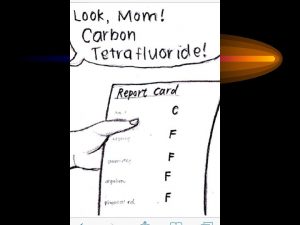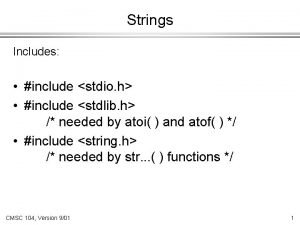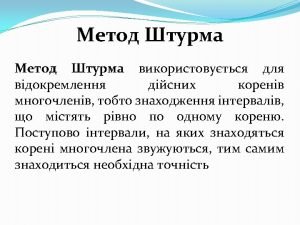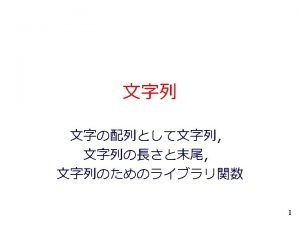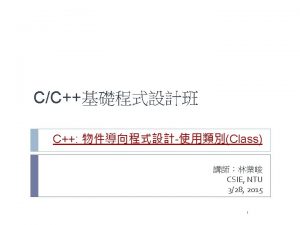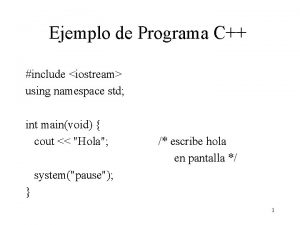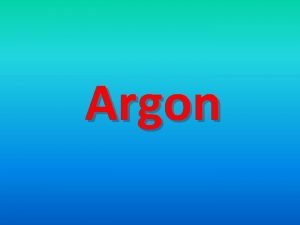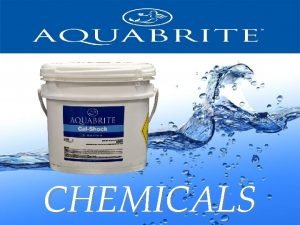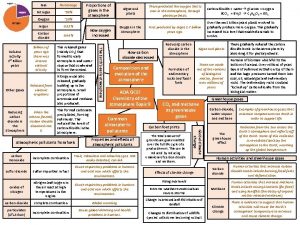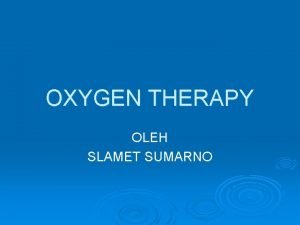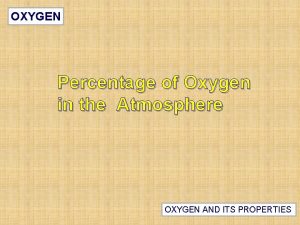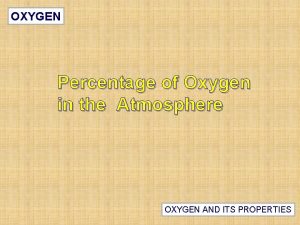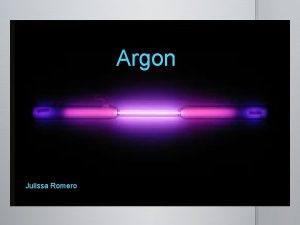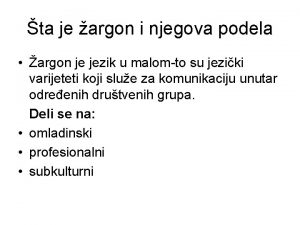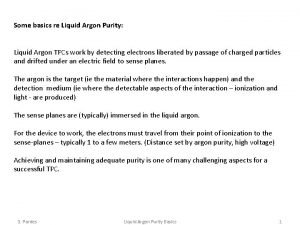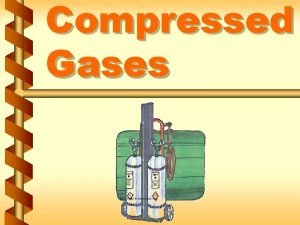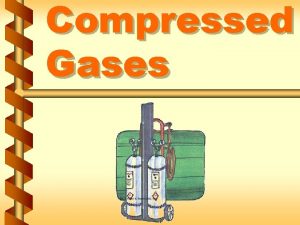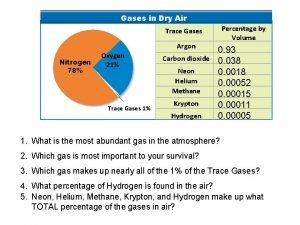COMPRESSED GASES Compressed Gases Chemicals include oxygen argon















- Slides: 15

COMPRESSED GASES

Compressed Gases • Chemicals include oxygen, argon, nitrogen, helium, acetylene, hydrogen, nitrous oxide, carbon dioxide, ammonia, chlorine, etc. • Compressed gases used in bulk systems or portable cylinders • Industry uses include welding, cutting, operating tools, transferring liquids, blowing agents, laboratories, etc.

Hazards of Compressed Gases • • Explosion Flammability Corrosive Toxicity Reactivity Air displacing Check MSDS for specific hazards

Markings or Labels • Name of the compressed gas • Hazards of the compressed gas • National Fire Protection Association (NFPA) labels • Department of Transportation (DOT) labels • Do not remove any labels

Identification of Compressed Gas Identification of compressed gas

FLAMMABLE GASES • • • ACETYLENE PROPANE HYDROGEN ETHYLENE OXIDE BUTANE

NON-FLAMMABLE GASES • • • NITROGEN ARGON HELIUM CARBON DIOXIDE NITROUS OXIDE

OXIDIZERS • OXYGEN • NITROUS OXIDE

POISON GASES • SPECIALTY GASES • AMMONIA

Manual Cylinder Handling • Close the valve and put on the cap • Do not “walk” cylinder by holding onto valve stem or cap • Never roll a cylinder on its side • Use a hand truck with a secure system

Cylinder Storage Area • Dry, well ventilated, protected from weather • Away from combustibles, heat sources, electrical systems • No sparks, smoking, open flames • Oxygen separated from fuels • Upright, secured, valve cap on • Not in elevators, staircases, hallways, etc. • Sign requirements

Cylinder Use • • Upright and secure Away from flames, sparks, electricity Keep oil, grease, flammables off cylinders Open valve by hand, if tools required don’t use the cylinder • Open valve slowly with hand to the side • Don’t tamper with safety devices

Cylinder Inspection • CHECK FOR: • • • DENTS CUTS OR GOUGES CORROSION AND PITTING BULGES CRACKS AND FLAWS HOLES AND TEARS • IF FOUND, DO NOT USE THAT CYLINDER SYSTEM

General Safety Precautions • • Only accept and use DOT approved cylinders Do not drop cylinders Protect cylinders from cuts and abrasions Don’t use cylinders for unintended function such as a roller or support • Don’t tamper with safety valves • Caps on whenever not in use

General Safety Precautions • READ ALL LABELS - IF NONE DO NOT ASSUME A CYLINDER CONTAINS A SPECIFIC GAS BASED ON COLOR • BE AWARE OF ALL HAZARDS ASSOCIATED WITH THE COMPRESSED GASES THAT YOU WILL BE USING • REVIEW MATERIAL SAFETY DATA SHEETS, (MSDS), FOR SPECIFIC GASES • A STANDARD 250 CUBIC FOOT CYLINDER PRESSURIZED TO 2500 PSIG CAN ATTAIN A SPEED OF 34 MPH IN ONETENTH OF A SECOND AFTER VENTING FROM A BROKEN CYLINDER CONNECTION
 Find the number of moles of argon in 452 g of argon
Find the number of moles of argon in 452 g of argon Commodity chemicals vs specialty chemicals
Commodity chemicals vs specialty chemicals Include stdlib h
Include stdlib h #include stdio.h #include stdlib.h #include string.h
#include stdio.h #include stdlib.h #include string.h #include stdio.h #include conio.h #include stdlib.h
#include stdio.h #include conio.h #include stdlib.h Why are gases easier to compress than solids or liquids?
Why are gases easier to compress than solids or liquids? Int main
Int main Include iostream
Include iostream #include iostream using namespace std
#include iostream using namespace std Iostream en c
Iostream en c
